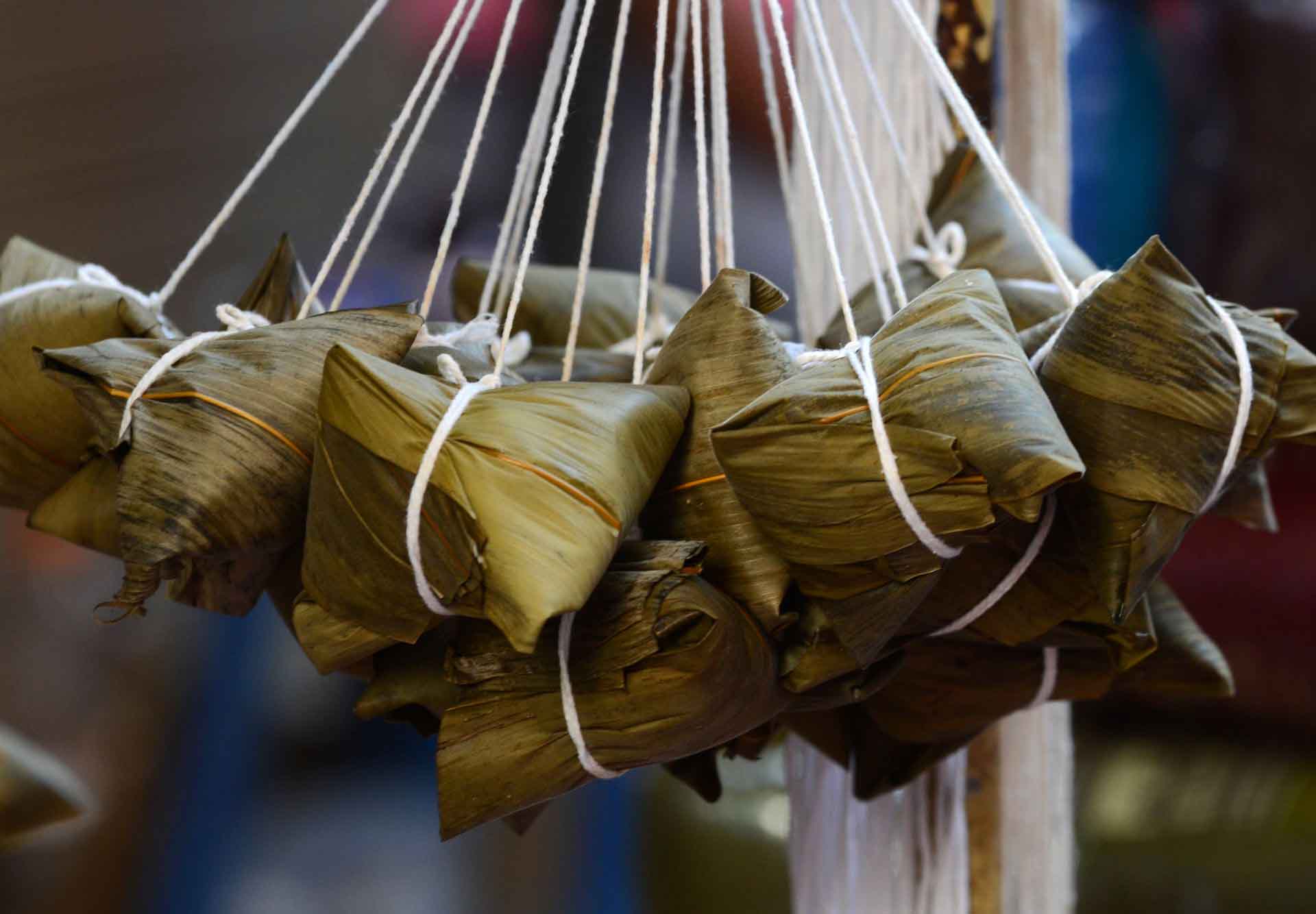Indulge in the savory and aromatic flavors of Shanghai-style pork zongzi, a traditional Chinese delicacy made of glutinous rice and pork, wrapped in bamboo leaves, and steamed to perfection. You’ll never forget the delicious taste of this classic dish!
------Advertisement-----
In this article, the Chinese word zongzi and the English phrase “sticky rice dumpling” will be used interchangeably. (It’s worth noting that while “sticky rice dumpling” is a common translation, it’s not the most precise; the proper term is “sticky rice parcel”).
Dragon Boat Festival (Duānwǔ Jié), a traditional Chinese celebration dating back over two millennia, is when zongzi is most popular, but it is a year-round treat.
------Advertisement-----
The time and effort spent hunting out or preparing sticky rice dumplings or parcels are more than justified, as anyone who has tried them can attest.
Ingredients:
To assemble the Zongzi, you’ll need:
- 75-80 dried bamboo leaves (2-3 leaves per zongzi)
- 5 pounds of uncooked short grain sticky rice
- 3 pounds of pork belly and/or pork shoulder
- Kitchen twine to tie the zongzi
For the Pork, you’ll need:
- ¼ cup of light soy sauce
- 5 tablespoons of sugar
- 3 tablespoons of Shaoxing wine
- 3 tablespoons of dark soy sauce
- 4 teaspoons of salt
- 1 teaspoon of white pepper
- 1 teaspoon of five spice powder
- ¼ cup water
For the Rice Marinade, you’ll need:
- 5 tablespoons of light soy sauce
- 5 tablespoons of dark soy sauce
- 2½ tablespoons of salt
- 1½ tablespoons of sugar
Instructions:
- Leave the zongzi leaves in a dish of water overnight under a heavy object to soak. They have to be completely submerged. After washing the glutinous rice, place it in a large container and fill it with water until it reaches about 3 to 4 inches above the rice. Pork belly should be diced into pieces that are 2 inches long and 1 inch wide. Light soy sauce, dark soy sauce, salt, sugar, Shaoxing wine, white pepper, and five-spice powder make up the marinade; combine them with the pork and stir until thoroughly combined. That’s a lot of salt, but the rice will absorb the taste while it cooks. When no liquid is left in the mixing bowl, add water, 2 tablespoons at a time. Pork has a high capacity for absorbing liquid, and this moisture can be maintained by adding more liquid while cooking. You want the pork marinade to be damp but not swimming in liquid.
- The following day, using a fine-mesh colander or sieve, drain the rice thoroughly. Light soy sauce and dark soy sauce, sugar, and salt make up the rice marinade, which you should stir thoroughly. Put it alone for a while, at least 30 minutes, and let the flavors blend.
- While waiting, wash and rinse both sides of each leaf. Place them in a bowl of fresh water to prevent them from drying out before you’re ready to wrap the zongzi. Pork, rice, zongzi leaves, and kitchen twine should all be spread out. Wrapping zongzi can now begin! The pictures will guide you through the process of wrapping them. Once you reach the finish and observe sauce pooling at the bottom of the rice, drain it out immediately; you don’t want any more liquid in the zongzi.
- Put all the zongzi in a big soup pot and nest them securely. Ideal gaps would be invisible. Alternatively, you can place a heavy heat-resistant plate on top of the zongzi to press them down. Cold water up to the point of submersion should be added to the pot. The pot should be heated over high heat on the stove. When the water comes to a boil, reduce the heat to medium and keep it there for four to five hours. The ideal temperature for the “moving” water is just below the boiling point.
- You should make sure the zongzi is completely submerged in water. Thus you should check the pot frequently. Don’t let the water temperature drop below a safe level by using anything other than boiling water.
